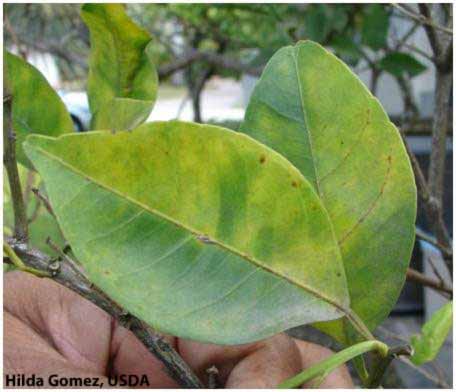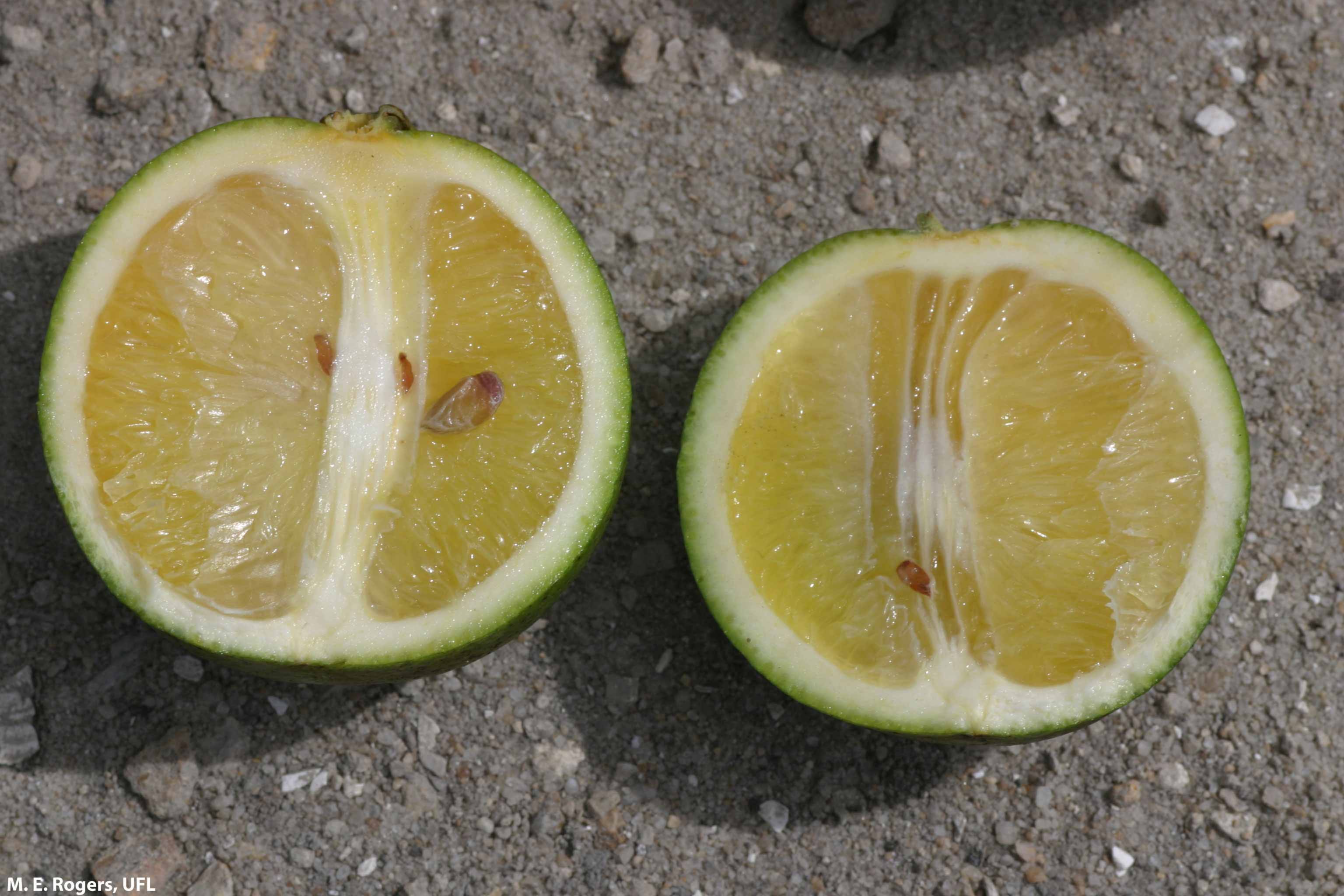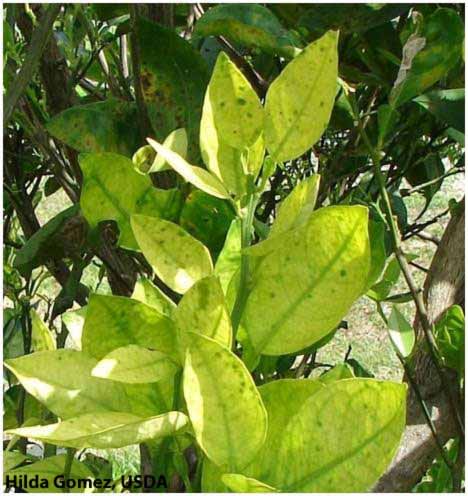Candidatus Liberibacter asiaticus
Citrus Huanglongbing (HLB)
Class: Alpha Proteobacteria
Order: Rhizobiales
Family: Rhizobiaceae



Photographers: Hilda Gomez, USDA and M.E. Rogers, UFL
Source: http://www.idtools.org/id/citrus/diseases/factsheet.php?name=Huanglongbing%20%28HLB%29
Description
Huanglongbing (HLB) in Chinese literally translates to “Yellow Dragon Disease” and it is caused by phloem-limited bacterium. That means that this bacterium attacks the phloem system of plants which is like the circulatory system in animals. Leaves of newly infected trees develop a blotchy mottle appearance. On repeatedly infected trees, the leaves are small and exhibit asymmetrical blotchy mottling. Fruit from HLB-infected trees are small, lopsided, poorly colored, and contain aborted seeds. The juice from affected fruit is low in soluble solids, high in acids and abnormally bitter. The fruit retains its green color at the navel end when mature, which is the reason for the common name "citrus greening disease." This fruit is of no value because of poor size and quality.
Ecological Threat: There are three forms of greening that have been described. The African form produces symptoms only under cool conditions and is transmitted by the African citrus psyllid Trioza erytreae, while the Asian form prefers warmer conditions and is transmitted by the Asian citrus psyllid Diaphorina citri. The American form (discovered first in Brazil) originated in China, so symptoms show under warmer conditions and it is transmitted by Diaphorina citri. HLB is known to occur in Florida, Louisiana, South Carolina, Texas and Georgia. HLB has caused a loss of 100.000 citrus acres in its first year (2005-2006) in Florida alone. For Florida, almost the entire state has established infection of Huanglongbing. As of July 2014 in Texas, this disease has been detected in Harris County.
For more information on the Asian Citrus Psyllid (Diaphorina citri) click here
Biology: This bacterium is carried to host plants by an insect vector, for Huanglongbing it is the psyllid insect Diaphorina citri. The psyllid insect transmits the bacteria when they feed on an infected plant and then feed on an uninfected citrus plant. The bacteria can be acquired by the insects in the nymphal stages and the bacteria may be transmitted throughout the lifespan of the psyllid.
History: HLB is one of the most devastating diseases of citrus and since its discovery in Florida in 2005, citrus acreage in that state has declined significantly. In April 2012, after about a week of testing, the California Department of Food and Agriculture (CDFA) removed a pumelo tree with a lemon graft from Los Angeles County after the tree and an Asian citrus psyllid found on the tree both tested positive for Huanglongbing. In late 2012, the presence of HLB was confirmed in south Texas, where some orchards are now quarantined to prevent the infection from spreading. In just 7 short years this disease has spread to 7 states, including Texas, California and Florida that are crucial for the citrus industry.
U.S. Habitat: Where citrus trees grow, in states that are subtropical and maintain humidity’s above 50%.
Distribution
Native Origin: Southeast Asia
U.S. Present: CA, FL, GA, HI, LA, SC and TX
Current CAPS Map showing distribution and eradication efforts in the United States here
Management
This disease has no cure once it has infected a plant, so prevention of infection establishment is the only way to “fight” against HLB. Early disease detection and eradication of infected plants are critical for successful disease management. When HLB is found in a grove, the owner is faced with a difficult decision: either manage the disease through psyllid control and removal of infected trees, or eradicate the block. A federal quarantine restricts all movement of citrus and other plants in the family Rutaceae from Asian Citrus Psyllid or HLB-infested areas into other states as a preventative measure to hinder the introduction of the bacterium.
The USDA has created and iPhone app called “Save Our Citrus” so citizens can quickly report the disease; also, if you live in Texas and think your citrus plants are showing signs of HLB call 956-447-3360.
Text References
Internet Sources
http://cisr.ucr.edu/citrus_greening.html
http://www.nass.usda.gov/Statistics_by_State/Florida/Publications/Citrus/cit/2011-12/cit0612.pdf
http://www.apsnet.org/edcenter/K-12/NewsViews/Pages/2006_04.aspx
http://pest.ceris.purdue.edu/fullmap.php?code=FGCOLQB
Back to Invasive Parasites & Diseases
 Texas Invasive Species Institute
Texas Invasive Species Institute